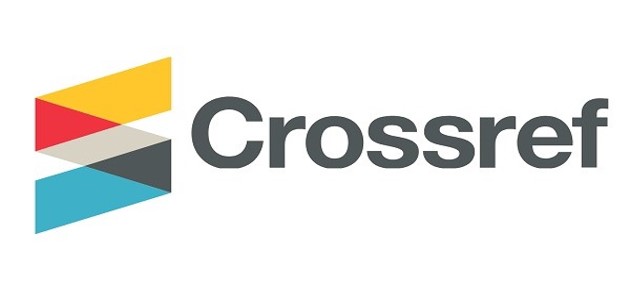Implicit in the development of parallel programming language using Visual Basic
DOI:
https://doi.org/10.31642/JoKMC/2018/050101Keywords:
Parallel programming, Parallel computing, MPI, Xcalable or XMP, Programming language, OOP.Abstract
Several studies have been performed to investigate the benefits of parallel programming models, and compared the models with same language family. The parallel technique is applicable only when the programmer has a single computer with multiple processors to perform various tasks individually or the programmer number of different computers connected by a single network. Parallel programming model in computing is an idea of parallel computer architecture. This research introduced the concept of parallel programming models and languages. The present research mainly focused on the different parallel programming models proposed by previous researchers using distinct programming languages. Through analyzing the strengths and weaknesses of various programming models used for parallel computing, a new model is developed. Along with this, the concept of OOP (Object-oriented programming) in the context of parallel computing is also discussed. This research proposed a model named as Asynchronous Dynamic load Balancing (ADLB). ADLB model used MPI as avehicle for library implementation rather as an end-user programming system.
Downloads
References
Karlin, A. Bhatele, J. Keasler, B. L. Chamberlain, J. Cohen, Z. Devito, R. Haque, D. Laney, E. Luke, F. Wang, D. Richards, M. Schulz, and C. H. Still, “Exploring Traditional and Emerging Parallel Programming Models Using a Proxy Application,” 2013 IEEE 27th International Symposium on Parallel and Distributed Processing, 2013. [2] M. Vanneschi, “The programming model of ASSIST, an environment for parallel and distributed portable applications,” Parallel Computing, vol. 28, no. 12, pp. 1709–1732, 2002. [3] J. Mcguiness and C. Egan, “A Domain Specific Embedded Language for Programming Parallel Architectures,” 2013 12th International Symposium on Distributed Computing and Applications to Business, Engineering & Science, 2013. [4] A. C. A. C. Chozas, S. Memeti, and S. Pllana, “Using Cognitive Computing for Learning Parallel Programming: An IBM Watson Solution,” Procedia Computer Science, vol. 108, pp. 2121–2130, 2017. [5] M. Perovšek, J. Kranjc, T. Erjavec, B. Cestnik, and N. Lavrač, “TextFlows: A visual programming platform for text mining and natural language processing,” Science of Computer Programming, vol. 121, pp. 128–152, 2016. [6] K. Tsugane, T. Boku, H. Murai, M. Sato, W. Tang, and B. Wang, “Hybrid view programming ofnuclear fusion simulation code in the PGAS parallel programming language XcalableMP,” Parallel Computing, vol. 57, pp. 37–51, 2016. [7] E. G. Pinho and F. H. D. Carvalho, “An object
oriented parallel programming language for distributed memory parallel computing platforms,” Science of Computer Programming, vol. 80, pp. 65–90, 2014. [8]E. Lusk, R. Butler, and S. C. Pieper, “Evolution of a minimal parallel programming model,” The International Journal of High Performance Computing Applications, p. 109434201770344, 2017. [9] C. Hundt, M. Schlarb, and B. Schmidt, “SAUCE: A web application for interactive teaching and learning of parallel programming,” Journal of Parallel and Distributed Computing, vol. 105, pp. 163–173, 2017. [10] M. Martineau, S. Mcintosh Smith, and W. Gaudin, “Assessing the performance portability of modern parallel programming models using TeaLeaf,” Concurrency and Computation: Practice and Experience, 2017. [11] E. Calore, A. Gabbana, J. Kraus, S. F. Schifano, and R. Tripiccione, “Performance and portability of accelerated lattice Boltzmann applications with OpenACC,” Concurrency and Computation: Practice and Experience, vol. 28, no. 12, pp. 3485–3502, 2016. [12] K. Tsugane, T. Boku, H. Murai, M. Sato, W. Tang, and B. Wang, “Hybrid view programming of nuclear fusion simulation code in the PGAS parallel programming language XcalableMP,” Parallel Computing, vol. 57, pp. 37–51, 2016. [13] X. Liao, L. Xiao, C. Yang, and Y. Lu, “MilkyWay 2 supercomputer: system and application,” Frontiers of Computer Science, vol. 8, no. 3, pp. 345–356, 2014.
Downloads
Published
How to Cite
Issue
Section
Categories
License
Copyright (c) 2018 Zainab fahad mhawes al-naseri

This work is licensed under a Creative Commons Attribution 4.0 International License.
which allows users to copy, create extracts, abstracts, and new works from the Article, alter and revise the Article, and make commercial use of the Article (including reuse and/or resale of the Article by commercial entities), provided the user gives appropriate credit (with a link to the formal publication through the relevant DOI), provides a link to the license, indicates if changes were made and the licensor is not represented as endorsing the use made of the work.










